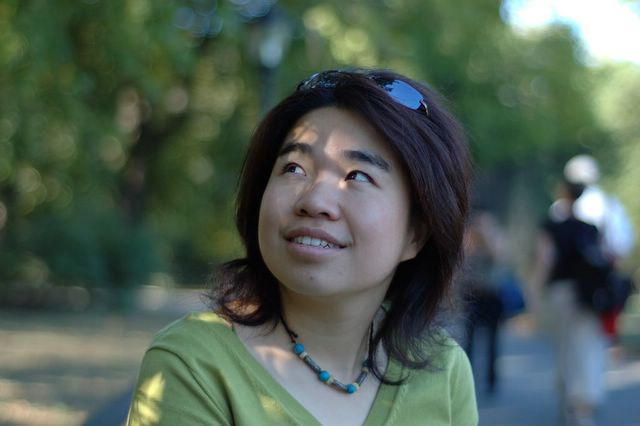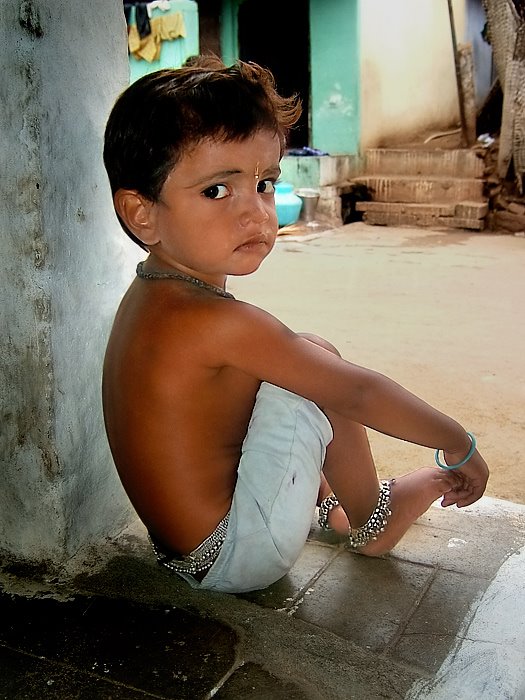
昨天晚上和sis 在电话中聊天,提到底特律的衰败。我想城市和人一样,有出生就有死亡,底特律大概正在死去。以汽车为底蕴的文明失去了汽车,很难想象它如何自处。
前几天去看六十年代末的Psychedelic Art展览。虽然第一次接触Psychedelic Art会觉得它有点艳俗的夸张,但是看得多了,觉得它那种一定要开到荼靡的美丽真是有动人心魄的力量。那个时代美国的年轻人一门心思要反对保守的五十年代,想要脱离欧洲文化的影响,想要从异文化中汲取资源,想要找到自己的身份。所以他们似无顾忌地尝试各种可能性,寻找最极端的生活方式,企图找到肉体和身心全面的自由。他们所创造出来的艺术虽然可能粗糙、笨拙、带有明显的意识形态的痕迹,但是他们的艺术又充满了难以抑制的生命力,有一种新鲜的、朴实的、原创性的冲击力。无论是借助肉体的开放,还是药品的力量,Psychedelic Art的艺术家们在批判社会的同时,也在批判自己,他们希冀从印度、中国和其他各种文化中找到反对战争、反对压抑个体性的可能性。
从1967年圣佛朗西斯科的summer of love,Psychedelic Art逐渐席卷了整个美国和多数欧洲国家。它影响了绘画、室内装饰、音乐、印刷等诸多领域内的创作,而且促成了许多新的艺术形式的诞生。比如当时著名的light show,利用幻灯机和灯光来营造虚拟的魔幻世界。艺术家们在幻灯机的胶片上用水彩来搅拌水杯里的水,幻灯机将水杯内色彩层次的无穷变化呈现在屏幕上。此外,有些艺术家利用带有各种团的彩色转盘在光源前面转动,产生出光线强弱和色彩的变化。这一切手工的努力在今天看来显得非常幼稚,因为借助计算机的帮助,小学生都能制造出类似的light show。但是60年代艺术家的可贵之处在于,他们用手工实现了他们的想象—一个充满了爱和幻想的世界。

我最喜欢的作品是利用灯光所制造出的类似于极光的一个light show。我一个人坐在黑暗中,看着同样黑暗的银幕上突然出现了美的炫目的光的弧线,它们比极光的变化更多样,色彩更绚烂,层次更丰富。那些光的弧线转瞬即逝,好像宇宙中流星的魅影。我坐在那里看得目瞪口呆,一时间不知身处何处。我觉得这大概就是时间的开始,或者是时间的结束。这种震撼使人麻木,除了贪婪地盯着屏幕沉浸于自己的想象世界之外,没有其他的选择。
从图书馆回来,学校一年一度的校友聚会还在继续。穿着晚礼服的绅士淑女站在Low Library前的白色帐篷里,举着香槟聊天,衣香鬓影,好不迷人。图书馆台阶上坐了一个中国老头,不管不顾地拉着胡琴。三声和着节拍,两声慢了节拍,有一搭没一搭地拉着《二泉映月》。不要拽我的乡愁啊,大叔。这样迷人的夜晚已经要让我哭了,怎么禁得住你这么折磨我的耳朵?赐予我一夜无梦的睡眠,赐予我一个清醒而愉快的早晨,就比什么都好了,阿门!

Psychedelic Art in 1960's Counterculture
Leading proponents of the 1960s Psychedelic Art movement were San Francisco poster artists such as: Rick Griffin, Victor Moscoso, Stanley Mouse & Alton Kelley, and Wes Wilson. Their Psychedelic Rock concert posters were inspired by Art Nouveau, Victoriana, Dada, and Pop Art. Richly saturated colors in glaring contrast, elaborately ornate lettering, strongly symmetrical composition, collage elements, and bizarre iconography are all hallmarks of the San Francisco psychedelic poster art style. The style flourished from about 1966 - 1972. Their work was immediately influential to album cover art, and indeed all of the aforementioned artists also created album covers.
Although San Francisco remained the hub of psychedelic art into the early 1970s, the style also developed internationally: Majorca based painter Mati Klarwein created psychedelic masterpieces for Miles Davis' Jazz-Rock fusion albums, and also for Carlos Santana Latin Rock. Pink Floyd worked extensively with London based designers, Hipgnosis to create graphics to support the concepts in their albums.
Psychedelic light-shows were a new art-form developed for rock concerts. Using oil and dye in an emulsion that was set between large convex lenses upon overhead projectors the lightshow artists created bubbling liquid visuals that pulsed in rhythm to the music. This was mixed with slideshows and film loops to create an improvisational motion picture art form to give visual representation to the improvisational jams of the rock bands and create a completely "trippy" atmosphere for the audience. The Brotherhood of Light were responsible for many of the light-shows in San Francisco psychedelic rock concerts.
Out of the psychedelic counterculture also arose a new genre of comic books: underground comix. "Zap Comix" was among the original underground comics, and featured the work of Robert Crumb, S. Clay Wilson, Victor Moscoso, Rick Griffin, and Robert Williams among others. Underground Comix were ribald, intensely satirical, and seemed to pursue weirdness for the sake of weirdness. Gilbert Shelton created perhaps the most enduring of underground cartoon characters, "The Fabulous Furry Freak Brothers," whose drugged out exploits held a hilarious mirror up to the hippy lifestyle of the 1960s.


1 条评论:
真的不知道那个时期的那种艺术是这样的!我很感兴趣,先从你的博客开始好好了解一下。
这个是那天我们照的那个变停车场的剧院的照片。底特律不是因为汽车业的变化才衰落的。
http://picasaweb.google.com/Dandan.Jian/NVzZk02?authkey=IwYL0t5DrC8
发表评论